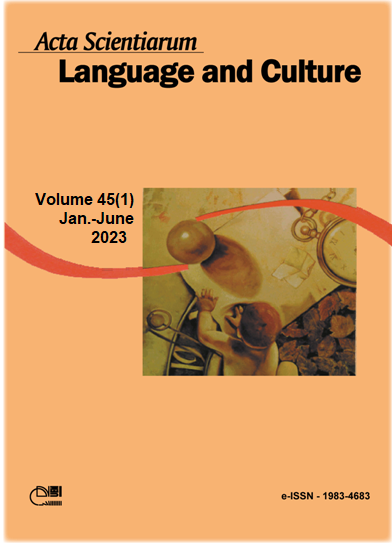Mapping different developmental paths in the acquisition of /l, ɾ/ in simple and complex onsets: speech production data
Abstract
The goal of this study is to map the paths taken by children when producing the liquids /l, ɾ/ in simple and complex onsets in Brazilian Portuguese. By mapping those paths, we aim to outline the interaction between segmental acquisition and syllabic acquisition along the phonological development. We conducted an experimental study comparing the production of 71 children between 2;0 and 5;11 years old in order to answer three questions: i) will the acquisition of /l, ɾ/ in CCV only occur after their acquisition in CV, or can it be simultaneous?; ii) is CCV development a mirror of CV development?; iii) which acquisition order(s) and developmental curve(s) are possible in the production of /l, ɾ/ in CV and CCV? Data averages and children’s individual paths reveal that /l, ɾ/ do not necessarily emerge in CCV only after their stabilization in CV. Furthermore, there is not necessarily a parallelism between the phenomena applied to /l, ɾ/ in CCV and CV: it is possible to have systematic substitutions or deletions in CCV but not in CV, or in CV but not in CCV. That is, the deletion or substitution of /ɾ, l/ in CCV is not always caused by gaps or instabilities in CV. Finally, six different stabilization paths were observed in the data collected. Two acquisition orders stand out for their higher frequency: /l/V>/ɾ/V>C/l/V>C/ɾ/V and /l/ V>/ɾ/V>C/ɾ/V>C/l/V.
Downloads
DECLARATION OF ORIGINALITY AND COPYRIGHTS
I Declare that current article is original and has not been submitted for publication, in part or in whole, to any other national or international journal.
The copyrights belong exclusively to the authors. Published content is licensed under Creative Commons Attribution 4.0 (CC BY 4.0) guidelines, which allows sharing (copy and distribution of the material in any medium or format) and adaptation (remix, transform, and build upon the material) for any purpose, even commercially, under the terms of attribution.
Read this link for further information on how to use CC BY 4.0 properly.




















6.png)









